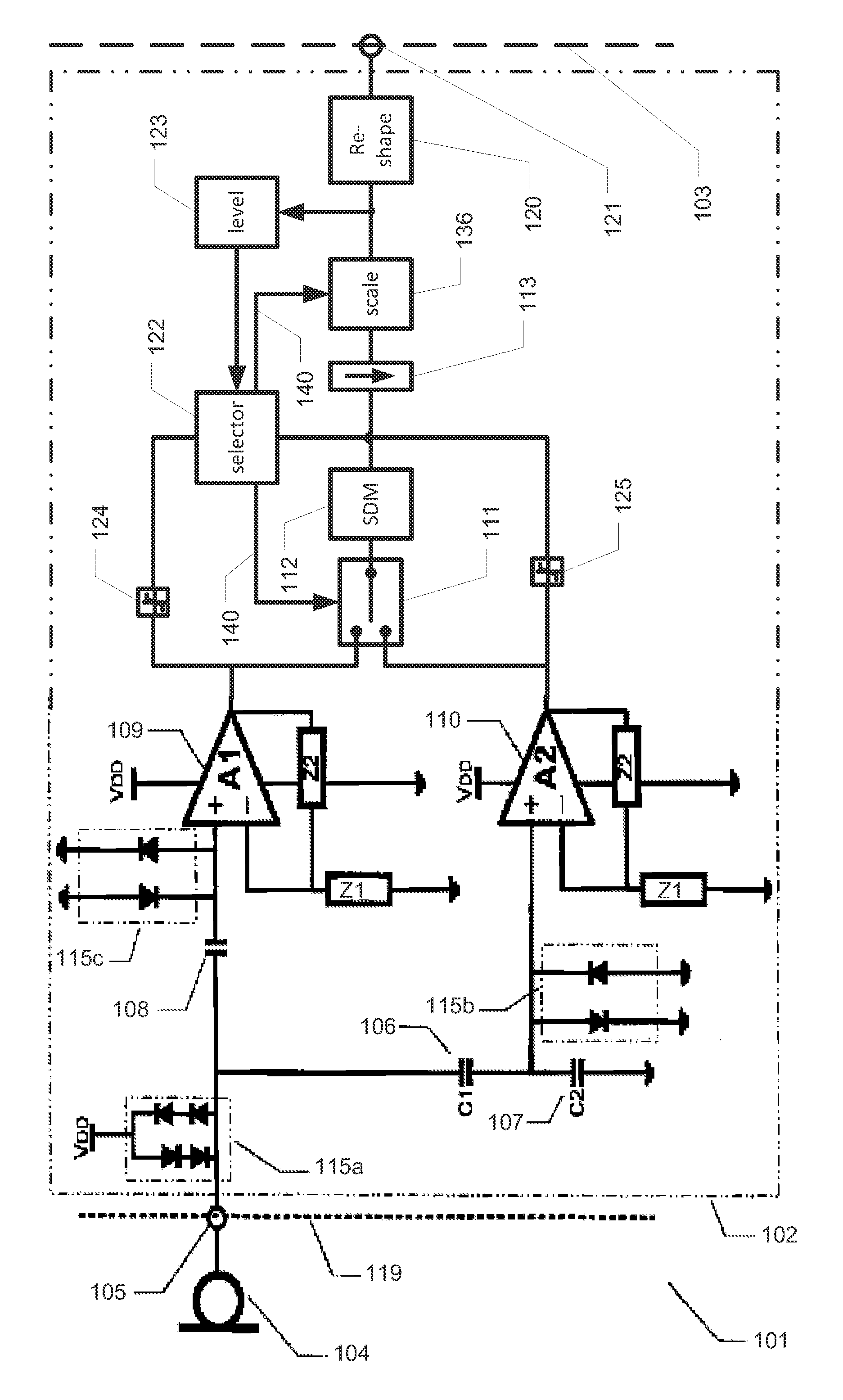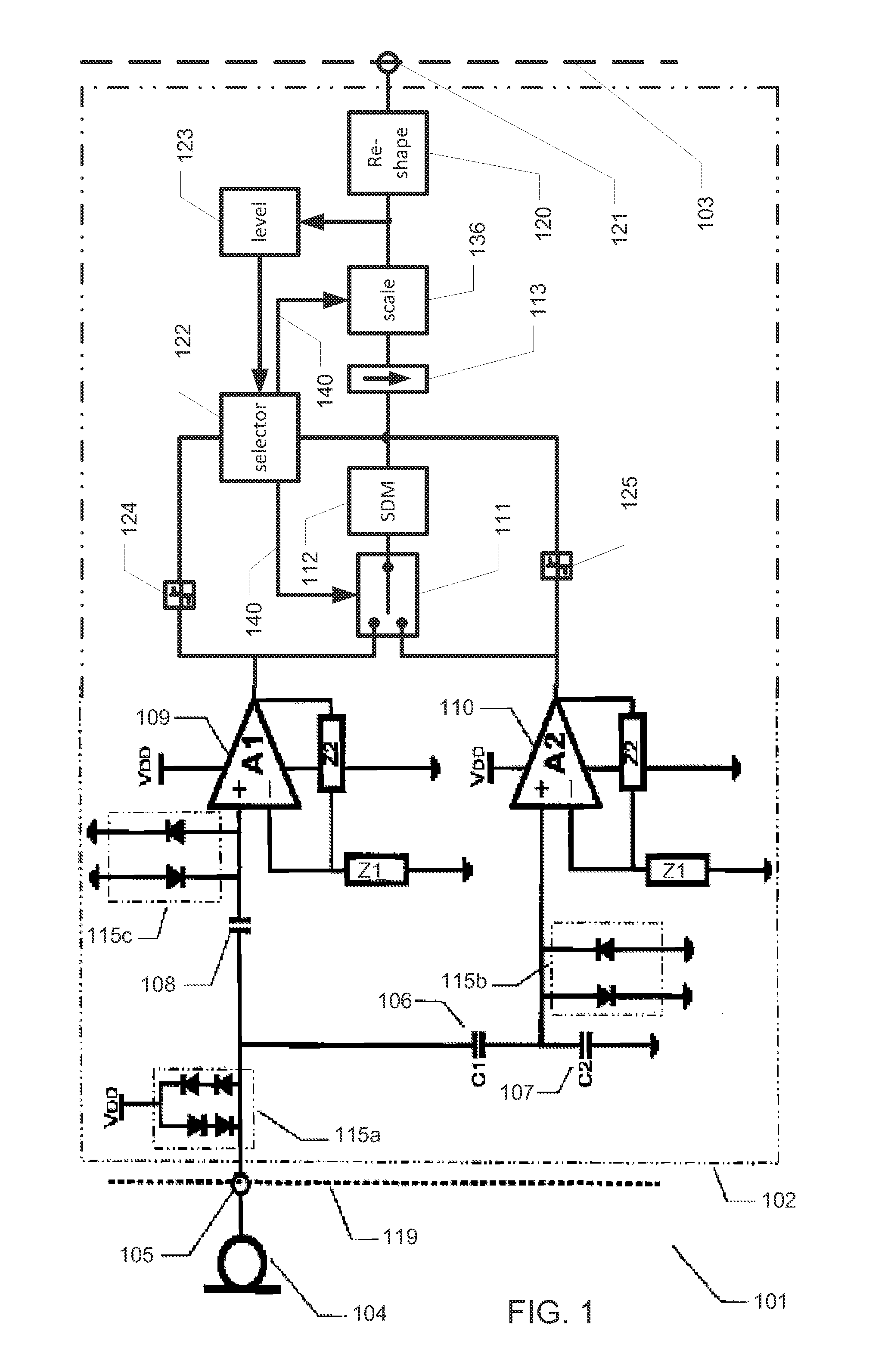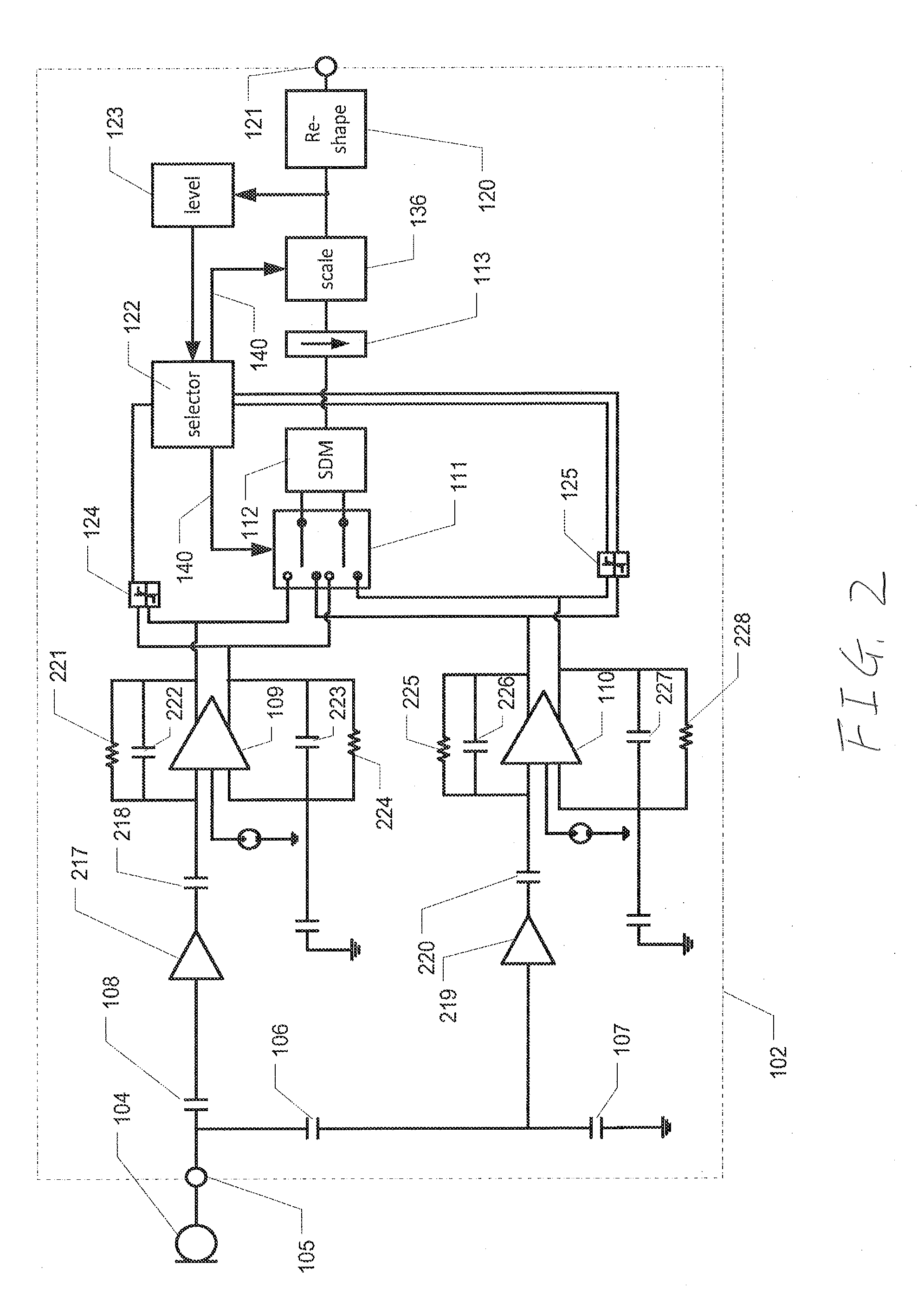Audio amplification circuit
a processing circuit and audio amplification technology, applied in the field of audio amplification and processing circuits, can solve the problems of thermal noise, failure damage or malfunction of active or passive components, etc., and achieve the effect of minimizing computational and hardware resource expenditure of audio amplification circuits, reducing the cost of hardware resources, and improving the masking of elevated input referred noise floors
- Summary
- Abstract
- Description
- Claims
- Application Information
AI Technical Summary
Benefits of technology
Problems solved by technology
Method used
Image
Examples
Embodiment Construction
[0096]FIG. 1 is a schematic drawing of an audio amplification circuit system 101 which comprises a microphone and 104 an audio amplification circuit 102 according to a first embodiment. The audio amplification circuit may serve as a front-end of a subsequent audio signal processing circuit (not shown). As illustrated by dashed interface line 103, the audio amplification circuit 102 may either be fabricated or implemented on separate CMOS semiconductor die or it may be fabricated on a common CMOS semiconductor die together with a subsequent signal processing circuit. A separate audio signal processing circuit may reside remotely for example within a portable terminal in form of an appropriately programmed or configured Digital Signal Processor (DSP) with data interface terminal(s) operatively coupled to the illustrated externally accessible output terminal 121 of the present audio amplification circuit 102 for receipt of a digital audio signal or digital audio stream. In this configu...
PUM
 Login to View More
Login to View More Abstract
Description
Claims
Application Information
 Login to View More
Login to View More - R&D
- Intellectual Property
- Life Sciences
- Materials
- Tech Scout
- Unparalleled Data Quality
- Higher Quality Content
- 60% Fewer Hallucinations
Browse by: Latest US Patents, China's latest patents, Technical Efficacy Thesaurus, Application Domain, Technology Topic, Popular Technical Reports.
© 2025 PatSnap. All rights reserved.Legal|Privacy policy|Modern Slavery Act Transparency Statement|Sitemap|About US| Contact US: help@patsnap.com



